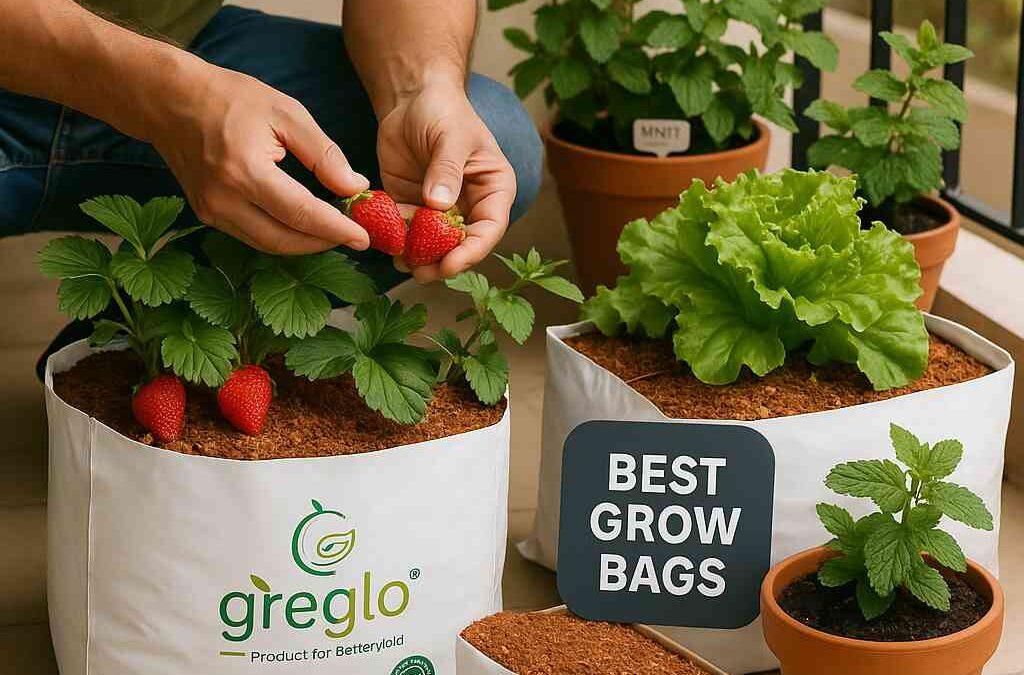Top 10 Plants That Grow Best in Grow Bags (Herbs, Veggies, and More)
Grow bag gardening has revolutionized urban farming by allowing gardeners to cultivate a wide variety of plants in small spaces.Thanks to innovative designs by leading cocopeat grow bag manufacturers, these fabric containers offer excellent drainage, aeration, and portability—perfect for balconies, patios, and other small areas. They promote healthy root growth and help prevent root-binding. If you’re wondering what to grow in grow bags, this guide highlights the 10 best plants for coir pith grow bags – including popular veggies, fruits, and herbs – along with the recommended bag sizes, soil mixes, and care tips for each. By choosing the right container gardening plants and techniques, even urban farmers with limited space can enjoy bountiful harvests.
1. Tomatoes
Tomatoes are a beloved choice for container gardening, thriving in grow bags or gardening bags with the proper care. These warm-season fruiting plants come in many varieties (cherry, heirloom, determinate, indeterminate) and can produce abundant harvests in a limited footprint. Why are grow bags considered perfect for growing tomato plants? The breathable fabric improves root health through air-pruning, preventing the roots from circling and encouraging a robust feeder root system. Planting bags also make tomatoes easy to reposition for optimal sunlight on a patio or balcony, ensuring the plants get 6–8 hours of sun even in urban settings. Additionally, using a grow bag can help avoid soil-borne diseases common in ground soil and makes it simple to control soil quality for these heavy feeders.
- Recommended Bag Size: Use at least a 7-gallon grow bag for one tomato plant, especially for determinate or bush varieties. Larger indeterminate tomatoes perform best in 10 to 15-gallon bags, which provide more stability and room for roots. As a rule of thumb, give each tomato about 5+ gallons of soil volume for healthy growth.
- Ideal Soil Mix: Tomatoes are heavy feeders and need nutrient-rich, well-draining soil. A mix of quality potting soil and compost (about 2:2 ratio) with added perlite or vermiculite for drainage works great. The mix enhances both organic content and soil breathability. Aim for a neutral to slightly acidic pH (~6.0–6.8). Mix in some slow-release organic fertilizer or compost at planting, as container tomatoes rely on you for nutrients.
Watering & Maintenance: Ensure tomato grow bags stay moist but never soaked, as overwatering can harm the roots. Fabric bags dry out faster than ground soil, so you may need to water daily in hot weather. Never let the soil completely dry out, as this can cause blossom-end rot or fruit splitting. Consider using a mulch on top of the soil to retain moisture. Also, provide support by inserting a tomato cage or stakes into the bag – even compact tomatoes benefit from support to keep fruit off the soil. For indeterminate varieties, pruning and tying vines to a stake will help manage their growth. Feed container tomatoes with a balanced or tomato-specific fertilizer every couple of weeks, as nutrients leach out with frequent watering. With steady water, regular feeding, and good support, your grow bag tomatoes will reward you with a hefty crop of fresh fruit.
Tomatoes also grow exceptionally well using the hydroponic technique with cocopeat grow bags. In soilless systems, pre-filled grow bags with washed and buffered cocopeat (or a cocopeat-husk chips blend) provide excellent moisture retention, aeration, and root support. This method is widely used in commercial greenhouses for maximizing tomato yields while maintaining disease-free conditions. The consistent structure of cocopeat promotes uniform root development, and its neutral pH allows precise nutrient control for optimal plant health and fruiting.
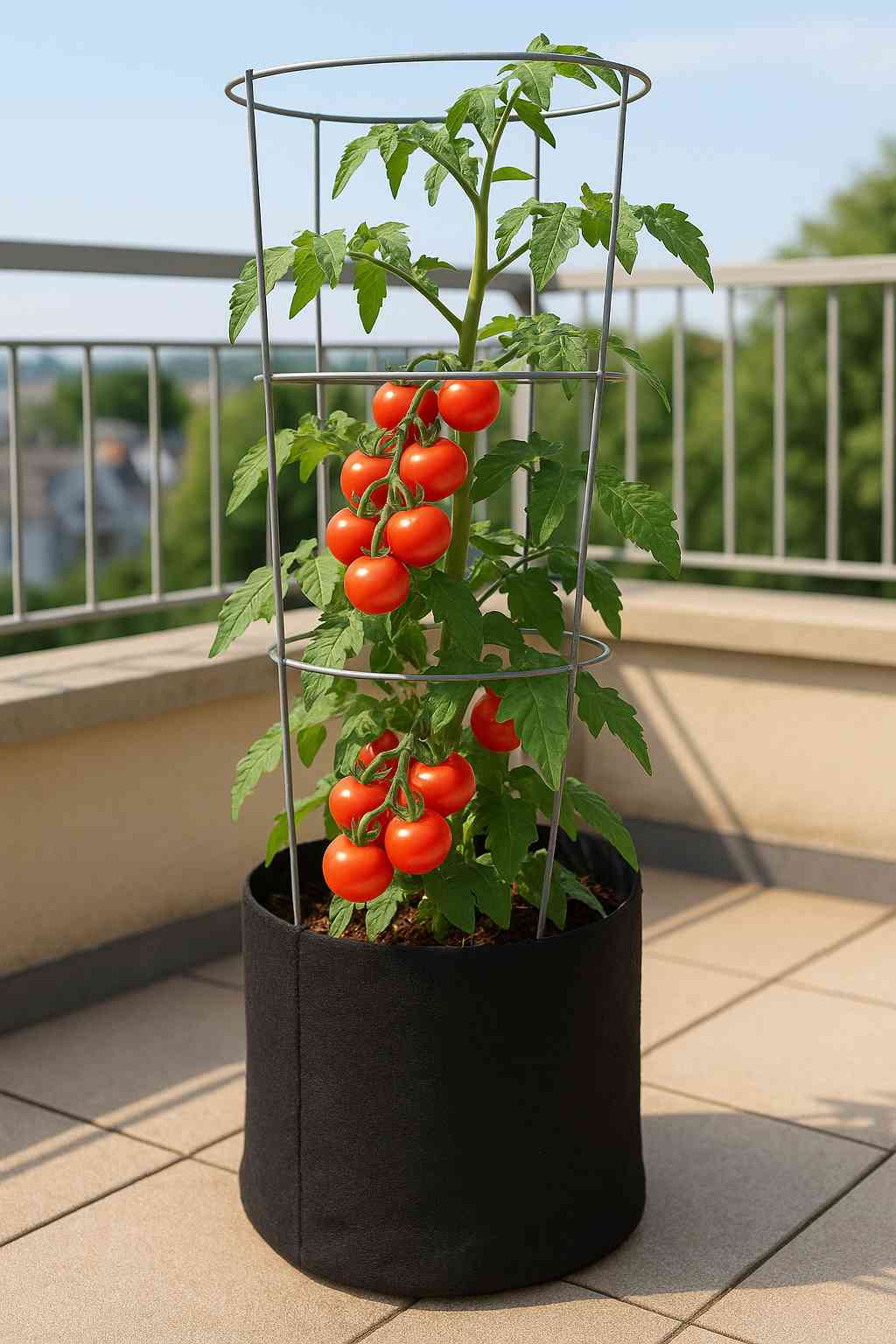
2. Peppers (Bell Peppers & Chilies)
Peppers – including sweet bell peppers and hot chilies – are excellent candidates for grow bag cultivation. These plants are relatively compact and thrive in the warm, controlled environment that containers can provide. In fact, growing peppers in bags can extend your season: if a cold spell hits, you can easily move the bags indoors or to a sheltered spot, protecting these frost-sensitive plants. Peppers grown in grow bags often avoid soil pests like nematodes, and their roots enjoy the well-aerated, well-drained conditions that fabric pots offer. An urban patio or rooftop is often perfect for peppers, as they love heat and sunlight.
- Recommended Bag Size: For most pepper varieties, a 5-gallon grow bag is ideal for one plant. Compact hot peppers and ornamentals can even thrive in 3-gallon containers, while larger bell pepper plants appreciate the full 5 gallons (or larger) to develop extensive roots. Using a container around 12–14 inches in diameter will support better yields, as it holds more soil (and thus more moisture and nutrients) for the plant.
- Ideal Soil Mix: Peppers need a fast-draining, loamy potting mix that stays aerated. Never use garden soil in containers, as it can become compacted.For best results, fill grow bags with quality potting soil enriched with compost and perlite. Tomatoes prefer soil that’s not too acidic or too alkaline—keep the pH in the 6.0–6.8 range. Mix in some slow-release organic fertilizer or well-rotted compost at planting time to give the peppers a nutrient boost. Remember, container peppers rely on you for feeding, so start them off in rich soil.
Watering & Care: Avoid overwatering peppers – their roots don’t like to sit in water. Let the top layer of soil dry before watering again, then soak the grow bag thoroughly. The fabric bag’s drainage will prevent waterlogging, but you should still be careful: soggy soil can lead to root rot or yellowing leaves. During hot summer days, you may end up watering once (or even twice) daily, as bags can dry out quickly in heat. Place pepper grow bags in a sunny, warm spot (6+ hours of sun) because peppers love heat. If winds are strong, cluster bags together or shelter them, since taller pepper varieties might topple when laden with fruit. Fertilize every 2–3 weeks with a balanced liquid fertilizer to support continuous flowering and fruit set. Lastly, pick peppers promptly when they reach usable size – this encourages the plant to produce more. With the right care, your grow bag peppers will deliver a bountiful and spicy (or sweet) harvest.
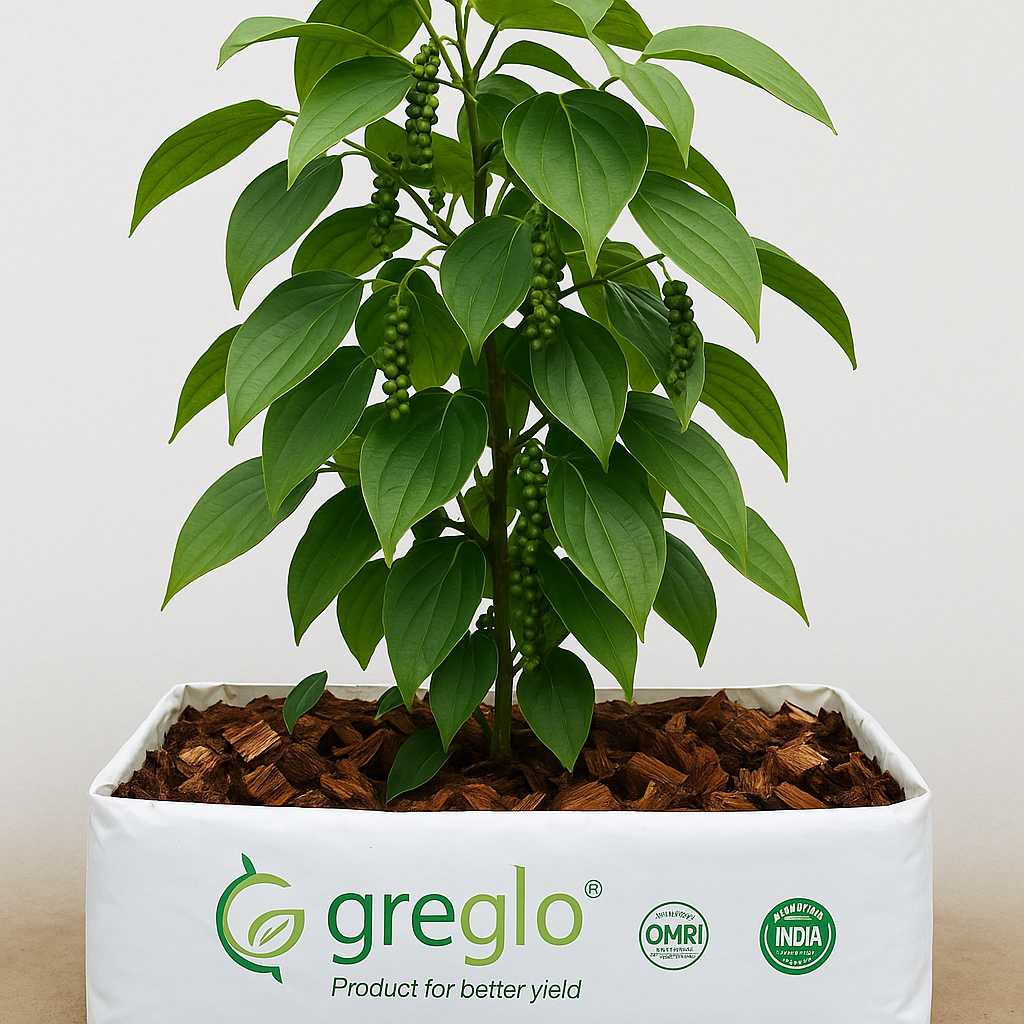
3. Potatoes
Homegrown potatoes are a rewarding crop, and they happen to thrive in grow bags. Traditionally, potatoes require “hilling” (mounding soil around the stems), which is easy to accomplish in a tall grow bag by simply adding more soil as the plant grows. Growing potatoes in bags is a space-saving method that also makes harvest a breeze – instead of digging, you just dump out the bag to collect your tubers. It’s an ideal solution if your garden soil is poor or you lack garden beds. Another benefit is that the porous bag material prevents waterlogged soil (potatoes need moisture but suffer in soggy ground) while providing good aeration to roots. With a sunny spot and diligent watering, a potato grow bag can yield a satisfying crop of spuds even in an apartment setting.
- Recommended Bag Size: Potatoes need room for both the roots and the developing tubers. Most potato grow bags are about 10 gallons, and this is a good size for one or two seed potato pieces. Five-gallon buckets or bags are about the minimum for a single potato plant (they will grow, but yield is small). For a more ample harvest, opt for a 15-gallon (or larger) grow bag, in which you can plant 3–5 seed potatoes. A larger volume allows you to layer more soil and gives tubers plenty of space to form.
- Ideal Soil Mix: Use a loose, well-draining mix of quality potting soil combined with compost. Potatoes prefer a fertile soil but not too rich in nitrogen – overly rich soil can lead to lots of foliage but fewer tubers.An effective mix for growing potatoes includes 2 portions of potting soil, 1 portion of compost, and 1 portion of coarse sand or perlite to improve drainage.For best results, maintain the soil pH between 5.5 and 6.5. This gentle acidity creates the right environment for plants to absorb nutrients and grow well. Avoid fresh manure or excessive fertilizer; a balanced organic fertilizer mixed in at planting is sufficient to start, since potatoes don’t need extremely rich soil.
Watering & Maintenance: Consistent moisture is key for potatoes. Keep the soil consistently moist, especially when the plant begins forming tubers after it flowers. The porous grow bag material helps prevent overwatering by allowing excess water to drain and evaporate, but it also means the soil can dry out faster. Check moisture often and water whenever the top inch feels dry – in hot weather, this could be daily watering. Don’t let the bag dry out completely, as drought stress can cause small or deformed potatoes. As the potato plants grow, practice “hilling”: when stems reach ~6–8 inches tall, add soil to the bag to cover the lower stems and leaves, leaving just a few inches of the plant exposed. Repeat this process of adding soil in stages (unrolling the bag upward as needed) until the bag is full. Hilling encourages the plant to produce more tubers along the buried stems. Place your grow bag in a sunny spot that receives a minimum of 6 hours of direct sunlight daily to help plants thrive. If possible, rotate the bag occasionally so all sides of the foliage get light. Harvest is fun and simple – once the foliage yellows and dies back, tip over the bag or open it and spill out the soil to gather your potatoes. Enjoy the literally “bagful” of potatoes with far less effort than digging in the ground!
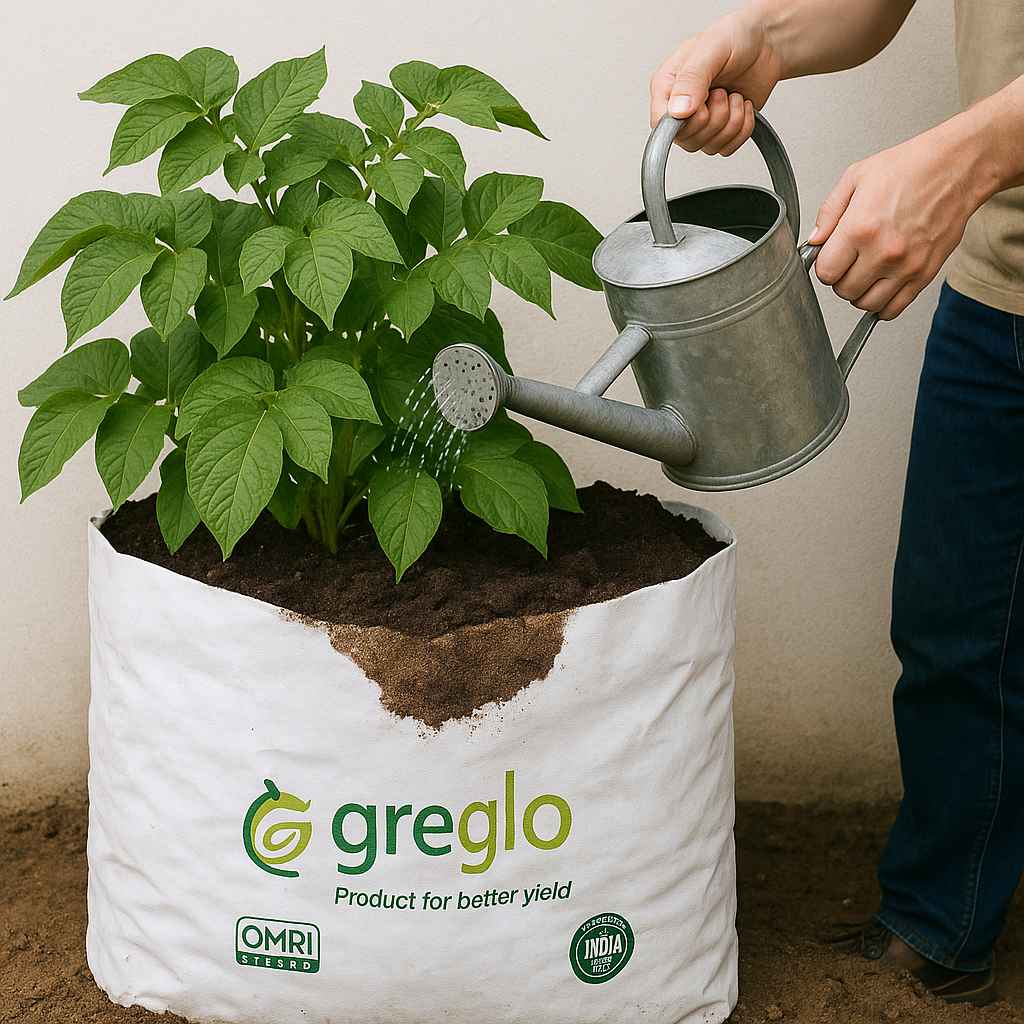
4. Lettuce and Salad Greens
Lettuce (and other salad greens like spinach, arugula, and kale) are well-suited to grow bags, making it easy to grow your own salads in a small space. These leafy greens have shallow root systems, so they don’t require deep soil – even a bag or container about 6–8 inches deep can suffice. Grow bags allow you to move your lettuce to find the best conditions: for instance, you can place them in full sun during cool spring/fall weather, but relocate to partial shade during hot summer days to prevent bolting. Lettuce in bags also stays cleaner (less soil splash) and is easier to protect from pests by simply covering or moving the container. Best of all, you can achieve a continuous harvest by succession planting and using cut-and-come-again harvesting.
- Recommended Bag Size: Shallow, wide grow bags (or containers) are perfect for lettuce. You don’t need a huge volume – a 3-gallon fabric bag (about 8–10 inches deep) can grow a couple of leaf lettuce plants or a collection of baby greens. Make sure your grow bag or container is at least 6 inches deep so roots have enough room to grow well. For head lettuce (like a full head of romaine or butterhead), use a bit larger volume (5 gallons or a wider tray) so the plant has space to form a head. You can also plant multiple lettuce in a larger bag, spacing them 4–6 inches apart for leaf varieties.
- Ideal Soil Mix: Lettuce thrives in rich, moisture-retentive soil. Use a good potting mix amended with plenty of compost or organic matter. This ensures a steady supply of nutrients in the smaller soil volume and holds moisture well. Adding a handful of perlite can improve drainage, but lettuce actually enjoys a bit of water-holding capacity as long as drainage is adequate. The soil should be loose and fluffy to allow roots to penetrate; avoid heavy clay soils in a container. Lettuce isn’t very fussy about pH, but around 6.0–7.0 is ideal. Because lettuce grows fast, also consider mixing in an organic, balanced fertilizer (like a slow-release granular) to feed it throughout its quick growing cycle.
- Watering & Care: Keep the soil consistently moist for lettuce – this crop has shallow roots and can wilt or become bitter if it dries out. The mantra is “evenly moist, but not waterlogged.” Fabric grow bags help excess water drain away; still, make sure there are drain holes if you’re using a plastic-lined grow sack or tray. Check the soil daily by touch – if the top half-inch is dry, water gently. In warm weather, you might water daily since containers can dry out fast. Avoid wetting the leaves excessively to prevent disease; watering at the base is best. Place lettuce bags where they get good sun in cool conditions, but in hot weather give them some afternoon shade or move the bag to a cooler spot. You can extend the season by moving grow bags under cover or indoors if frost threatens, or by starting a new batch of seeds in successive plantings. Harvest outer leaves continually (for leaf lettuce) or cut whole heads when ready, and enjoy fresh salads grown just steps away. Lettuce’s quick growth and low maintenance make it one of the best plants for grow bags in any urban garden.
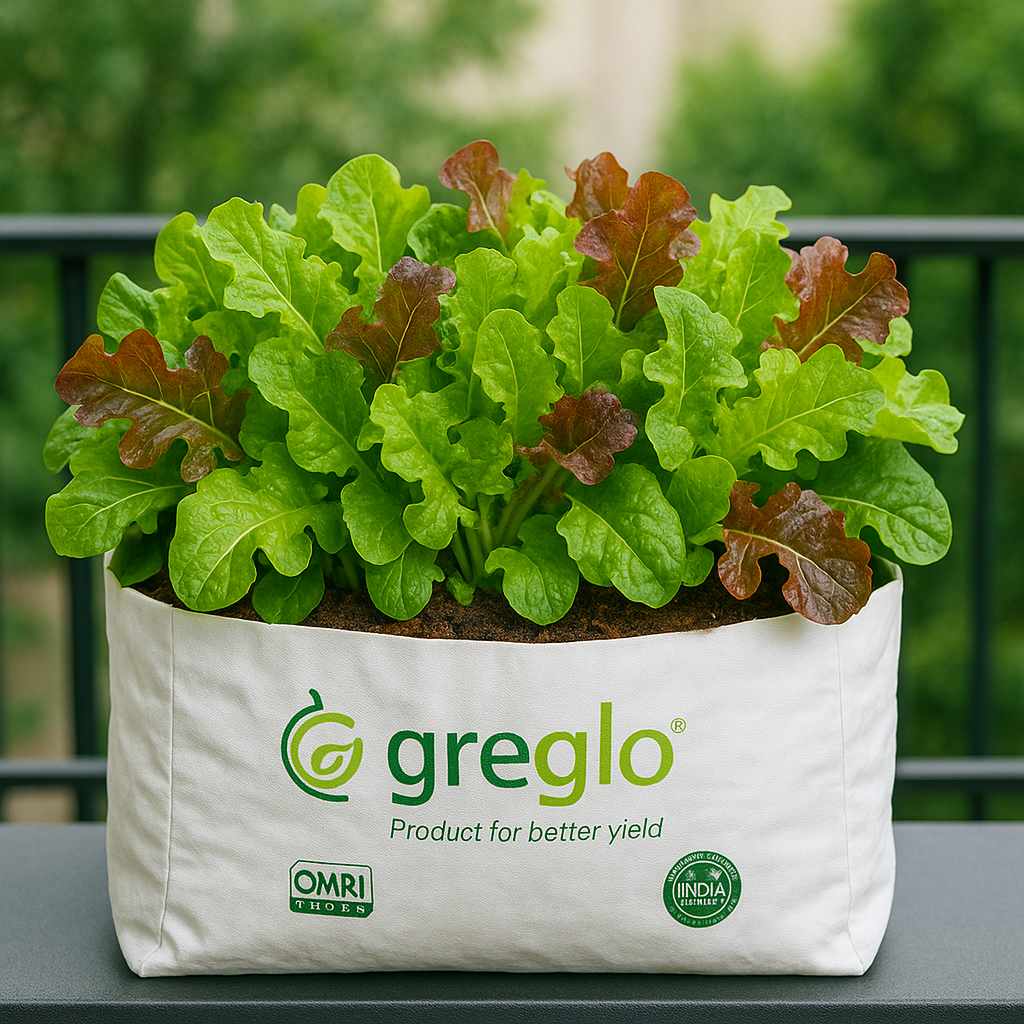
5. Bush Beans (Green Beans)
Bush beans are a fantastic vegetable to grow in bags, especially for beginners. Unlike pole beans, bush beans are compact (usually 1–2 feet tall) and do not require staking, which simplifies container cultivation. They produce plenty of tender green beans (or yellow/purple varieties) in a short period, helping you maximize yields from a small area. Grow bags provide the good drainage beans need (beans can suffer if waterlogged) and also keep their roots warm – beans love warmth for germination and growth. By growing bush beans in a portable container or coir pith grow bag, you can ensure they get full sun and even extend the season by moving the bag to a protected spot if needed.
- Recommended Bag Size: A medium-sized grow bag (around 7 gallons) is recommended for bush beans. In a 7-gallon bag, you can typically plant 3-5 bush bean plants spaced a few inches apart. They’ll have enough room for roots and won’t overcrowd each other. You can also use a 5-gallon bag for 2–3 plants if space is limited, but keep an eye on watering since smaller volumes dry out faster. Select a grow bag with a depth of 8 to 12 inches to ensure the roots have ample space to spread and develop well. Bush beans have relatively shallow roots but appreciate some lateral space – a wider bag or even a rectangular fabric planter works well.
- Ideal Soil Mix: Beans aren’t as heavy feeders as fruiting veggies, but they do best in fertile, well-draining soil. A mix of general potting soil with compost (e.g., 2 parts soil to 1 part compost) provides a balanced fertility. It’s important that the mix drains well; add perlite or coarse sand if needed to ensure water doesn’t stagnate. Beans can fix some nitrogen from the air (with the help of root bacteria), so they don’t require high nitrogen fertilizer – in fact, too much nitrogen can produce more leaves than beans.Choose soil that has a good amount of phosphorus and potassium—these nutrients help the plant produce more flowers and healthy pods. A spoonful of organic vegetable fertilizer or bone meal at planting can help with bean production.
- Watering & Care: Keep the soil consistently moist for best bean production, especially when the plants are flowering and setting pods. In grow bags, this means checking moisture daily. Water when the top inch of soil is dry – typically every 1–2 days in hot weather, less in cool weather. The goal is even moisture; if beans dry out too much, they may drop flowers or develop stringy pods, but overwatering can cause root issues. The breathable fabric bag will help prevent overwatering by excess drainage, but always ensure the bag isn’t sitting in a puddle (elevate it slightly if necessary). Place bush bean bags in full sun (they need 6–8 hours for good yields). Since bush beans are short, they won’t shade out other plants, which makes them easy to group with other container veggies. Watch for pests like aphids or spider mites on bean foliage; if found, treat early with organic insecticidal soap. Harvest beans frequently – as soon as they reach edible size – to encourage the plants to produce more. A big advantage of grow bags is you can have successive plantings; when one crop is finished, replant new bean seeds in fresh soil for a second harvest in late summer. With minimal effort, your grow bag bush beans will deliver a reliable and tasty crop.
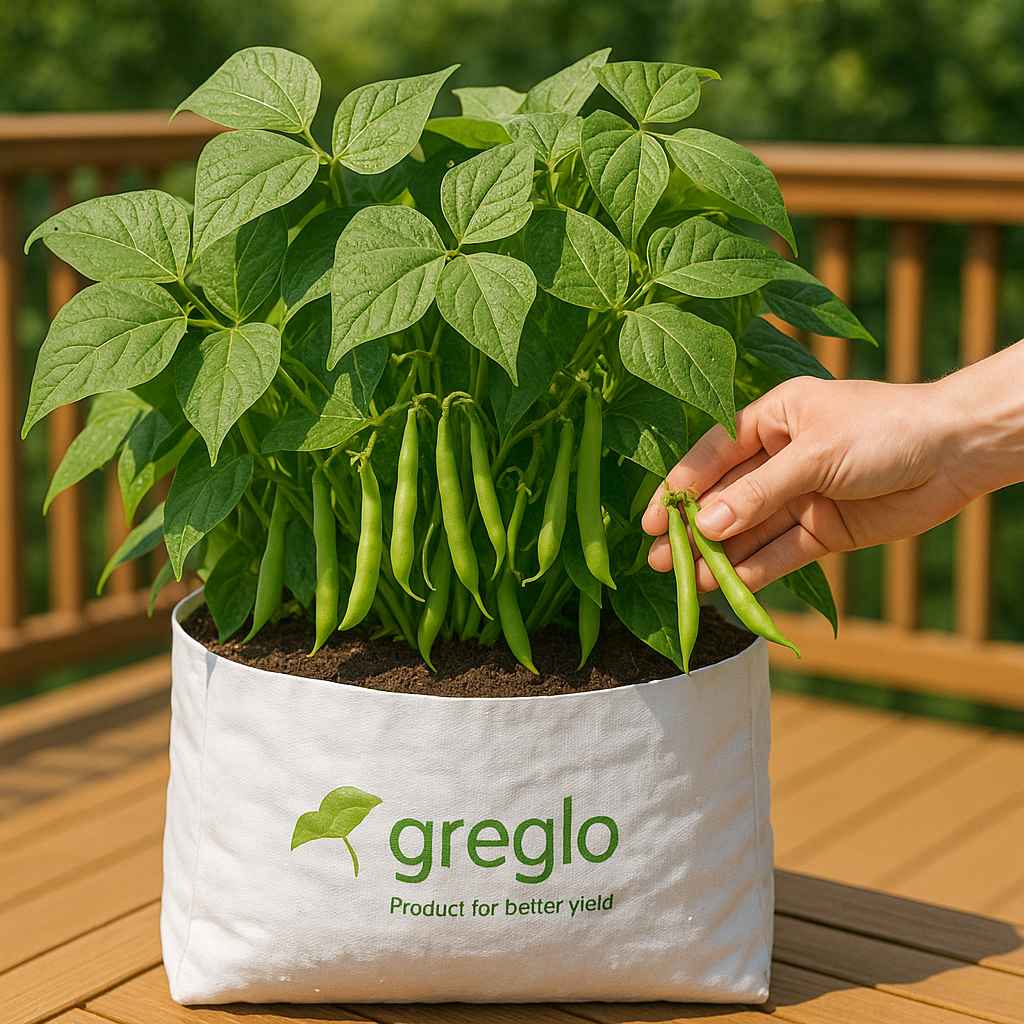
6. Strawberries
Strawberries are a delightful fruit that can be grown successfully in cocopeat grow bags – even hung on walls or placed on apartment balconies. These compact perennials have shallow roots and do well in containers as long as they have rich soil and consistent water. One big advantage of growing strawberries in bags is that the fruits are kept off the ground, reducing problems with rot and pests that come from soil contact. Additionally, you can position strawberry bags in sunny spots or even elevate them (some people hang fabric strawberry planters) to save space. With everbearing or day-neutral strawberry varieties, you could be picking sweet berries through much of the season, all from a couple of grow bags.
- Recommended Bag Size: Strawberries don’t need deep soil, but they do appreciate some room for runners and roots. As a general guide, allocate about a 5-gallon grow bag per strawberry plant for best results. In practice, that might mean planting 2–3 strawberry plants in a 10- to 15-gallon bag. You can also use special strawberry grow bags or towers that have pockets for multiple plants. Make sure the grow bag has at least 6 to 8 inches of soil so roots have enough space to grow strong and deep. If using a wide, shallow bag (or even a window box), space plants about 8 inches apart. Having a slightly larger volume of soil helps maintain moisture, which strawberries love.
- Ideal Soil Mix: Rich, well-draining soil is key for juicy strawberries. Use a high-quality potting mix combined with plenty of organic matter (compost or well-rotted manure). Strawberries grow best in slightly acidic soil, with a pH close to 6.0. You might incorporate some peat moss or pine bark fines to acidify the mix a touch and improve moisture retention. Good drainage is critical – while strawberries like moisture, their crowns can rot if water sits around them. Ensure the grow bag has enough drainage holes to let excess water escape and prevent root rot. A slow-release, berry-specific fertilizer or a balanced organic fertilizer can be mixed in at planting time. Because container soil nutrients deplete over time, consider side-dressing with a bit of compost mid-season or using liquid fertilizer as the plants start to fruit.
Watering & Maintenance: Water consistently to keep the soil just moist at all times. In a fabric bag, the soil can dry out faster due to increased airflow, so check daily. The trick is to avoid both dryness and sogginess. In hot weather, you may need to water once in the morning and again later in the day with smaller amounts. The soil should stay damp to the touch but never muddy. Good drainage in the bag will prevent waterlogging and root rot. Place the strawberry bags where they get full sun (at least 6 hours) for maximum fruiting, unless you’re in a very hot climate where a bit of afternoon shade might prevent heat stress. For maintenance, snip off runners (the long stems that shoot out) as they appear, especially in the first year – this directs the plant’s energy into fruit production instead of making baby plants. Also remove any dried or diseased leaves promptly. Using a light straw mulch on top of the soil in the bag can help retain moisture and keep berries clean. After the main harvest, you can fertilize the plants lightly to encourage strong growth (strawberries set flower buds for the next year in the late summer/fall). With care and consistent watering, your grow bag strawberries will produce delicious fruits that are easy to pick and enjoy, proving you don’t need a big garden bed to have a strawberry patch!
You can also grow strawberries using cocopeat grow Bags in hydroponic farming!

7. Mint
Mint is a vigorous herb known for its refreshing aroma and flavor – and it’s almost too easy to grow, which is why growing it in a container is often recommended. Mint spreads aggressively via runners and rhizomes; in fact, in the ground it can become invasive. A coir pith grow bag provides the perfect solution by confining mint’s wandering roots while still giving it room to thrive. Mint is a hardy perennial (in most climates) that will return each year, so a durable fabric pot makes sense as a long-term home. Plus, you can move your mint bag around to catch sunlight or bring it closer to the kitchen for easy harvesting of those fragrant leaves for tea, mojitos, or cooking.
- Recommended Bag Size: Mint can grow in relatively small containers, but because it’s such a fast grower, a larger pot (at least 10–12 inches in diameter) is advisable. This is roughly equivalent to a 3-5 gallon grow bag. A wide container gives mint’s root system and runners space to spread without becoming root-bound too quickly. Ensure the bag has good drainage holes; mint likes moisture but excess water should still escape. You might start with a smaller bag and pot up to a larger one after a year or two as the plant expands. Remember, one mint plant can eventually fill whatever pot you give it! Keeping it slightly root-restricted will also help control its size.
- Ideal Soil Mix: Mint isn’t very fussy and can grow in many soil types, but in a container, start with a premium potting mix for best results. A mix that includes cocopeat or coir pith (for moisture retention), perlite or vermiculite (for drainage), and compost or organic matter (for nutrients) is ideal. Essentially, aim for rich, loose soil that holds moisture but doesn’t stay soggy.Mint grows best in soil with a pH between 6.0 and 7.0, which is mildly acidic to neutral. Before planting, you can mix a balanced slow-release fertilizer into the soil, but avoid over-fertilizing mint – too much fertilizer (especially nitrogen) can cause it to grow very lush but with less intense flavor. Generally, mint is a light feeder; an annual top-dress of compost or a dilute fish emulsion feed now and then will suffice in containers.
Watering & Care: Keep mint evenly moist. This herb loves water and will wilt if it dries out completely, though it usually recovers quickly once watered. In hot weather, daily watering may be needed for a grow bag mint, since the fabric allows extra evaporation. Give your plant a deep watering whenever the top layer of soil (about an inch) starts to feel dry to the touch. That said, ensure good drainage because mint sitting in waterlogged soil can suffer root rot. One benefit of using fabric grow bags is that they allow air to flow through, helping prevent the soil from becoming too wet or waterlogged. Place your mint bag in full sun to part shade – mint can tolerate some shade and in very hot climates it actually prefers afternoon shade to keep the leaves from scorching. Trim or pinch back the stems regularly to encourage bushy growth and prevent flowering. If flowers do appear, cut them off; this keeps the plant focused on growing flavorful leaves. Pruning your mint not only provides you with usable harvests but also keeps the plant shapely. Each season, you might also check that roots aren’t sneaking out of drainage holes and trim them if needed (mint can try to escape any container!). In autumn, mint will die back in cold regions; you can put the bag in a protected spot or indoors to overwinter, or simply let it go dormant and it will re-sprout in spring. With minimal care, a grow bag of mint will provide an endless supply of leaves and stay nicely contained – no invasive garden takeover, just minty goodness at your fingertips.
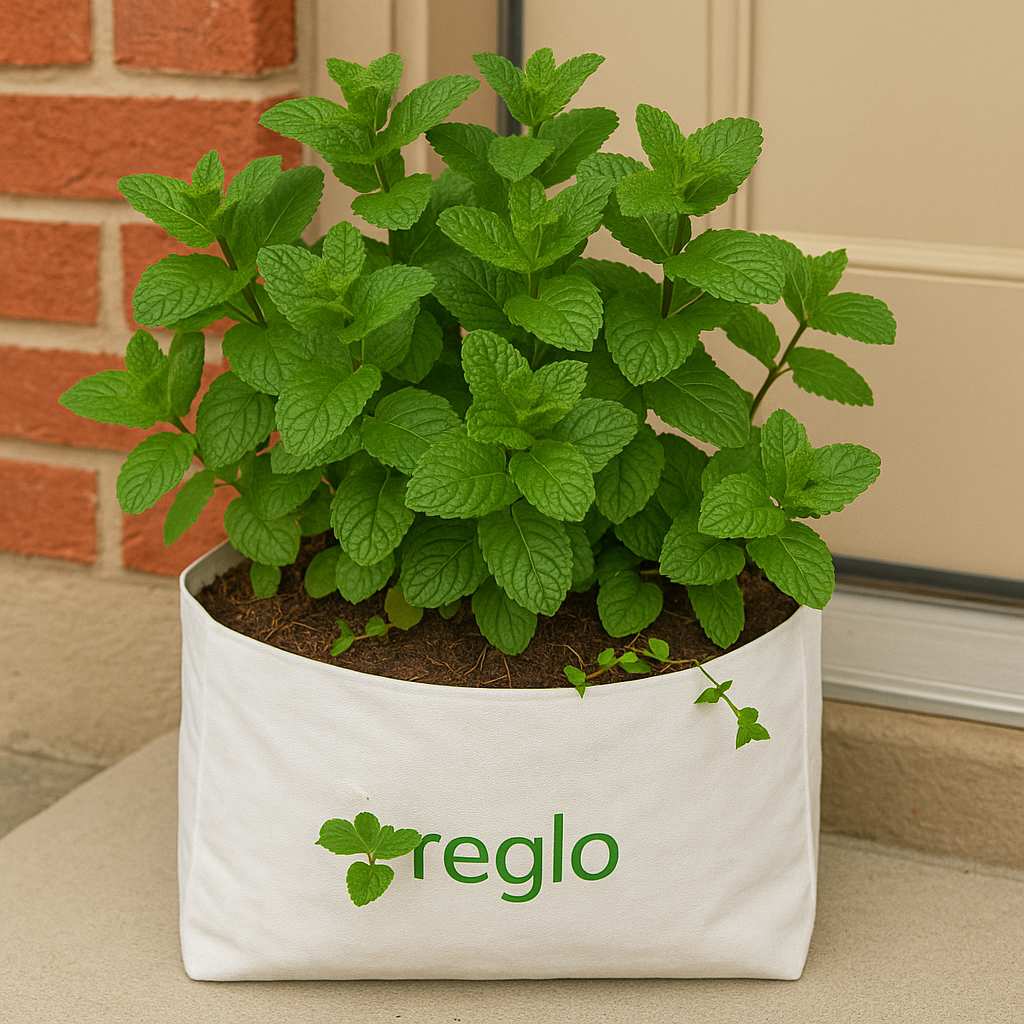
8. Basil
Basil is a staple herb for many cuisines, famous for its fragrant leaves. It’s also one of the best herbs for container gardening, thriving in gardening bags or pots near your kitchen. Basil loves warm weather and sun, and a fabric planting bag allows its roots plenty of air circulation and excellent drainage, which this herb appreciates. Because basil grows relatively quickly and stays under 2 feet tall, it doesn’t need a huge container; even urban gardeners can find space for a bag or two of basil on a balcony or windowsill. Fresh basil is expensive to buy and perishable, so growing your own in a bag is both economical and convenient. Plus, you can move the grow bag if needed to protect basil from cold nights or to catch more sun, ensuring a steady supply of pesto ingredients all season long.
- Recommended Bag Size: Basil has a fairly shallow root system, so you can grow it in a compact grow bag. A 2 to 5-gallon bag (equivalent to an 8–12 inch diameter pot) is perfect for a single basil plant or a couple of smaller varieties. Ensure at least 6–8 inches of soil depth for roots. You can also plant multiple basil plants in a larger container (for example, 3–4 plants in a 10-gallon bag) if you want a bigger harvest, but give each plant roughly a square foot of space for best growth. Using fabric bags is beneficial because basil in plastic pots can sometimes suffer from overheating roots; the breathable fabric keeps roots cooler on hot days.
- Ideal Soil Mix: Rich, well-drained soil is basil’s preference. Use a high-quality potting mix and enrich it with compost or aged manure to ensure plenty of nutrients (basil is a leafy plant and needs nitrogen for that lush growth). The soil should also contain perlite or similar to make sure excess water drains out, as basil doesn’t like soggy roots.Basil grows best in soil that’s slightly acidic to neutral, with a pH level ranging from 6.0 to 7.0 Before planting, you might mix in some all-purpose organic fertilizer or a bit of blood meal for extra nitrogen. Because grow bags can leach nutrients with frequent watering, plan to fertilize basil periodically. An initial fertile soil mix plus a monthly feeding with a balanced liquid fertilizer will keep basil producing tender new leaves continuously.
- Water basil regularly to keep the soil damp, but avoid soaking it. This herb likes consistent moisture – if it dries out too much, it can wilt quickly (though it usually perks up after watering). In hot weather, check your basil bag daily; you’ll likely water every day or every other day since containers dry out faster than garden beds. That said, ensure the container drains well because basil’s roots will rot in standing water. A good method is to water deeply until it runs out the bottom of the bag, then let the top inch of soil dry before the next watering. Set basil grow bags where they get 6 to 8 hours of direct sunlight each day.If you’re in a very hot climate, a bit of afternoon shade can prevent leaf scorch. Regular harvesting is key to basil care: pinch off the top sets of leaves often to use in your cooking – this not only gives you flavorful herbs, but it encourages the plant to branch and become bushier. Also, pinch off any flower buds as soon as they appear.When basil starts flowering, the leaves may turn bitter and the plant focuses less on growing new leaves. By preventing flowering, you prolong the basil’s productive lifespan. Basil is an annual in most places, so you can sow seeds or plant new starts in succession to keep a fresh supply through the summer. Keep an eye out for aphids or whiteflies, which sometimes find basil, and treat them with an insecticidal soap if needed. With warmth, sunshine, and regular water, your grow bag basil will thrive and provide a fragrant, delicious harvest for your kitchen – truly a joy for any urban gardener.
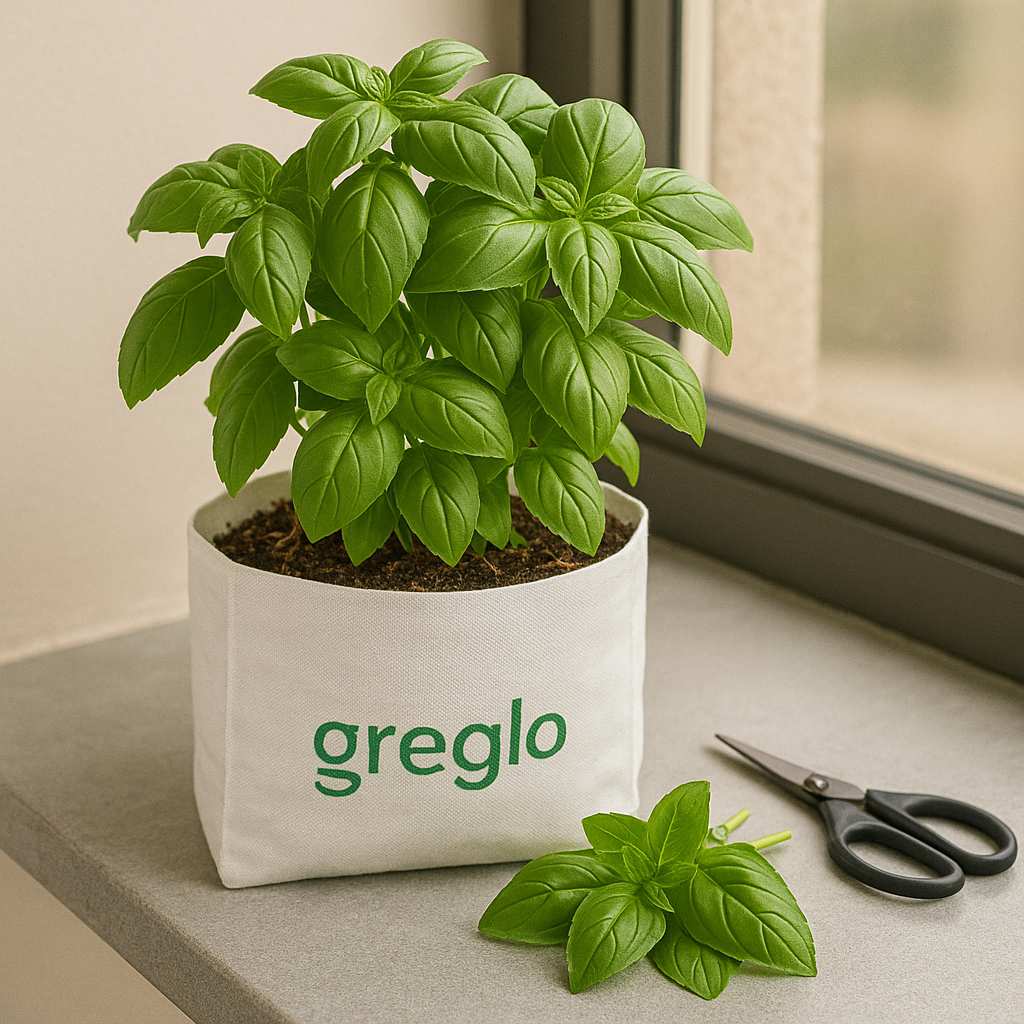
9. Carrots
Carrots might not be the first crop you think of for container gardening, but they actually do extremely well in grow bags. In fact, using a deep grow bag with loose, rock-free soil often yields straighter, smoother carrots than garden soil would. Carrots are a root crop that require depth and good drainage, both of which you can easily provide in a tall fabric bag.If your garden soil is too hard or rocky, using grow bags for carrots makes growing them much easier and more successful. They’re also quite decorative – the ferny foliage looks nice on a patio. By selecting the right varieties (some are even bred for container length) and keeping up with water, you can pull sweet, crispy carrots from your grow bags nearly year-round (in rotations) or at least through spring and fall in most climates.
- To help carrots grow well, use a grow bag that’s 12 to 18 inches deep so the roots have enough room to stretch and mature properly. A 5-gallon or 7-gallon grow bag that is tall (or a fabric planter bag labeled for root crops) works well. You can even use something like a 10-gallon tall laundry basket lined with fabric as a DIY carrot planter. The diameter of the bag can vary – use a wider bag if you want to plant many carrots. For reference, in a 15-gallon bag (about 18 inches diameter), you might sow 15–20 carrots (thinned to final spacing). Ensure the bag can hold at least 12 inches of soil depth; some carrot varieties, especially longer ones, need that much length to grow straight. Shorter “Parisian” or ball-type carrots can get by with less depth (8–10 inches), so if you only have a shallow container, choose those varieties. The key is depth and uniform soil – the volume also helps retain moisture for the developing roots.
- To grow long and healthy roots, carrots need loose soil that drains well and isn’t compacted. This is where grow bags shine – you can create a perfect fluffy mix free of rocks or clods.For best results with carrots, combine equal parts of potting soil, compost, and coarse sand or perlite to create a light, airy mix. Adding sand or perlite improves drainage and keeps the soil loose, which helps carrots develop straight, healthy roots. Too much nitrogen (from lots of manure, for example) can cause forked or hairy roots, so don’t over-fertilize the initial mix. Aim for moderate fertility: compost provides some nutrients, and you can add a balanced organic fertilizer at half-strengthCarrots grow best in soil that’s mildly acidic, with a pH between 6.0 and 6.8. Fill the grow bag to near the top, as carrots will be sown on the surface and need only a light covering of soil. Before sowing seeds, moisten the soil thoroughly.
Watering & Care: Consistent moisture is critical for carrots to germinate and grow without cracking. After sowing carrot seeds on the surface of the bag, mist or gently water daily to keep the top layer moist until germination (carrot seeds are slow, taking 1–3 weeks to sprout). To help, you can cover the bag with a burlap or shade cloth to retain moisture until you see seedlings. Once growing, water the carrots deeply whenever the top inch of soil dries out. In a breathable grow bag, you might need to water every day or two in hot weather, since the mix is sandy and well-drained. Avoid letting the soil dry out entirely, as it can cause carrots to stop growing properly or crack as they mature.. On the flip side, avoid constant waterlogging – the fabric bag’s drainage should prevent this as long as you’re not watering excessively. Thin the carrot seedlings early, leaving about 2 inches between carrots (crowding leads to small roots). Position the bag in full sun for best growth, though carrots can tolerate part-day sun especially in hotter climates. Because the soil in containers can warm up quickly, carrots in bags often grow faster than in-ground. One tip: succession plant a new batch of carrot seeds in another bag or after you harvest, to keep the supply going. Also, consider using varieties suited for containers (like ‘Short n Sweet’ or ‘Nantes’ types for longer bags). Harvest by pulling up the carrots once they reach mature size – in a loose grow bag mix, they come out easily. Growing carrots in bags is surprisingly easy and yields wonderfully shaped roots, proving that even root vegetables can be stars of your container garden lineup.
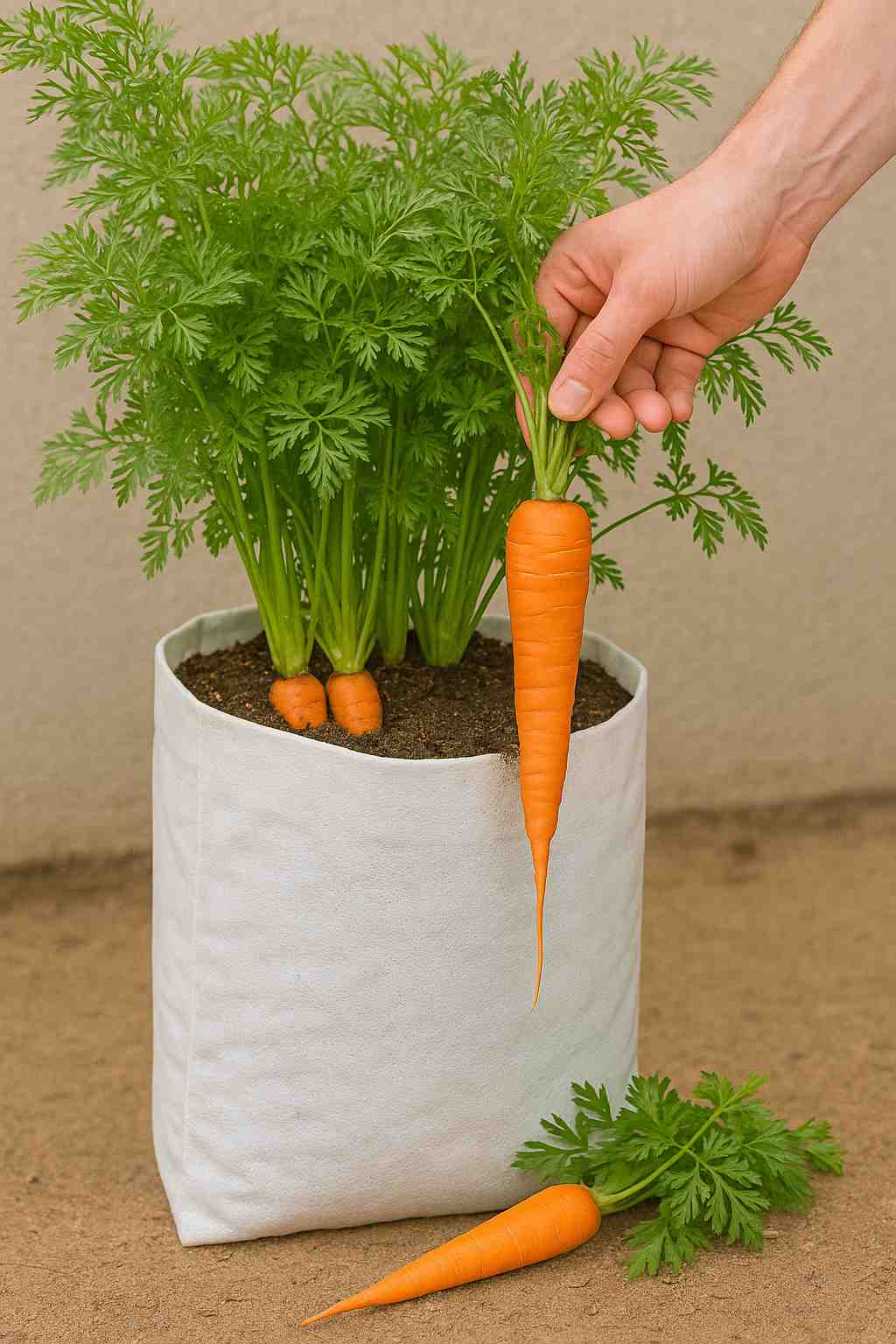
10. Zucchini (Summer Squash)
Zucchini and other summer squashes are prolific producers, and they can flourish in planting bags given enough space. These plants do get large and bushy, but a big fabric container can handle one squash plant and keep its vigorous growth in check. The benefit of using a grow bag is that you can start zucchini earlier (bags warm up faster than ground soil) and place it in the sunniest spot available. Also, harvesting is easier at container height, and you can avoid some ground pests. Zucchini in grow bags will need diligent watering and feeding – but the payoff is a continuous supply of fresh squash from a patio or rooftop garden. Urban farmers love zucchini for its high yield relative to space: one plant can produce dozens of fruits over a season if well cared for.
- Recommended Bag Size: Use a large grow bag, at least 10 gallons, for zucchini or bush squash. Bigger is even better; a 15-20 gallon bag gives the extensive root system plenty of room and helps support the big leaves and heavy fruits. Choose a grow bag that’s both deep and wide—at least 12 to 18 inches in depth and similar in width—to give the roots ample room to spread and grow well. This volume of soil will not only accommodate the roots but also provide a buffer for moisture and nutrients (smaller containers dry out too fast for thirsty squash plants). If you’re using a fabric raised-bed style container, one zucchini plant per 2–3 square feet of soil surface is a good guideline. Make sure the container is placed where the sprawling leaves (3+ feet across) will have space to spread; you can also train some leaves or stems to hang over the bag’s sides to save space.
- Ideal Soil Mix: Zucchini are heavy feeders and demand rich soil. Fill the grow bag with a nutrient-rich mix: one recipe is 2 parts potting soil, 1 part compost, and 1 part aged manure or worm castings. The soil must drain well (add perlite if your compost is very dense), because squashes like moisture but will suffer if their roots sit in water.The best pH for growing is around 6.5, which is mildly acidic to neutral. Before planting, you can mix in an organic slow-release fertilizer, or plan to feed the plant regularly (see below). Zucchini also appreciate some calcium in the soil (to prevent issues like blossom end rot), so mixing in a bit of garden lime or bone meal can help if your mix is lacking. Because the plant will be in that same soil all season, don’t skimp on initial fertility – a big squash plant can quickly deplete nutrients in a small volume of soil.
- Watering & Care: Keep zucchini well-watered, as they have large leaves that transpire water rapidly. In the heat of summer, a gardening bag zucchini may require watering once or twice a day. Water deeply around the base of the plant until you see excess draining out, ensuring the entire root zone gets moisture. The fabric bag’s breathability will help keep roots aerated, but it also means you need to be vigilant to not let the soil completely dry out. Adding a layer of straw or wood chips on top of the soil helps the grow bag retain moisture for longer. Fertilize regularly to support its fast growth and heavy fruiting. A balanced liquid fertilizer (or one slightly higher in phosphorus and potassium for flowering) every 2-3 weeks is a good regimen. You can also top-dress with compost mid-season. Place the grow bag in full sun (at least 6–8 hours). If possible, orient the bag so that excess vine or leaf growth can sprawl outward without shading other plants – for example, at the edge of a balcony or garden arrangement. Monitor for common squash issues: powdery mildew can be a problem in mid to late summer, but good airflow around the plant (which the elevated bag can provide) helps, and you can trim a few congested leaves if needed. Also watch for squash vine borers or beetles, and use organic controls if they appear. Harvest zucchini frequently when fruits are smaller (6–8 inches) for best taste and to encourage the plant to keep producing. With attentive care, a single zucchini in a grow bag will reward you with an impressive crop, showcasing that even larger vegetables can adapt to container life.
Suggested Image: A thriving zucchini plant growing out of a large fabric grow bag in a backyard corner, with huge green leaves spilling over the sides of the bag and You can spot a few young zucchini forming beneath the leafy plant canopy.
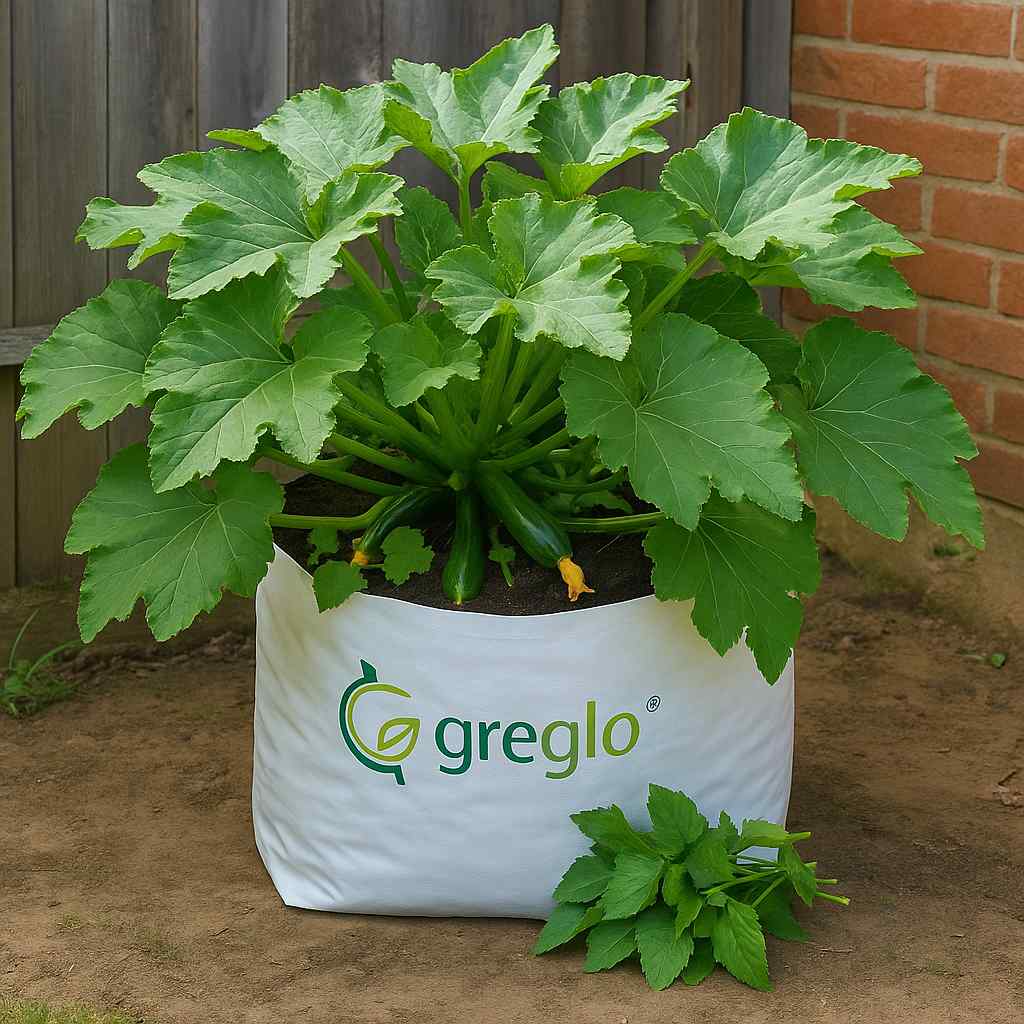
Expand Your Garden with Grow Bags
Grow bags open up a world of possibilities for urban farmers and small-space gardeners. As we’ve seen, a wide range of herbs, vegetables, and fruits can flourish in grow bags, from shallow-rooted greens to sprawling squash. These easy-to-move, soft containers let you grow plants on patios, balconies, or any sunny corner you have. They also give you greater control over soil quality and moisture, leading to healthier plants and often higher yields in constrained spaces.
If you’re looking to get started, sourcing from the best grow bag manufacturers ensures quality and durability, while partnering with trusted cocopeat suppliers in Tamil Nadu guarantees the right growing medium for strong root development.
The 10 plants highlighted above are among the best plants for grow bags, but they’re by no means the only ones. Feel free to experiment with other container-friendly crops or dwarf varieties – for example, try grow bags for cucumbers, eggplants, or even dwarf blueberries (with the right soil) to further expand your container garden.
Remember the key tips for success: choose an appropriate bag size for each plant’s root needs, use a well-draining soil mix rich in organic matter, and be diligent about watering and feeding since container plants rely on you for their care. With those principles in mind, what to grow in grow bags is limited only by your imagination and culinary desires. Whether you’re harvesting juicy tomatoes, handfuls of fresh herbs, youe fav blueberries or homegrown potatoes, grow bags make it possible to enjoy a diverse garden in the smallest of spaces. So go ahead – grab a few grow bags, fill them with your favorite plants, and watch your urban oasis come to life. Happy gardening, and may your grow bag garden bring you abundant harvests and the joy of homegrown produce!

